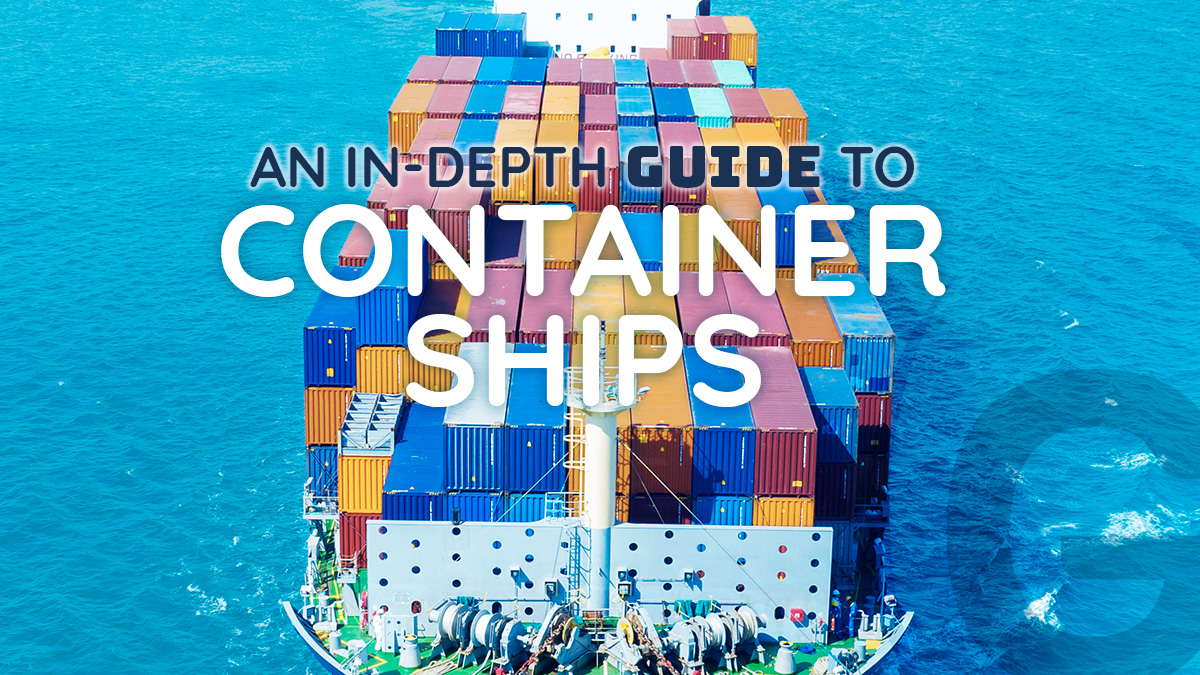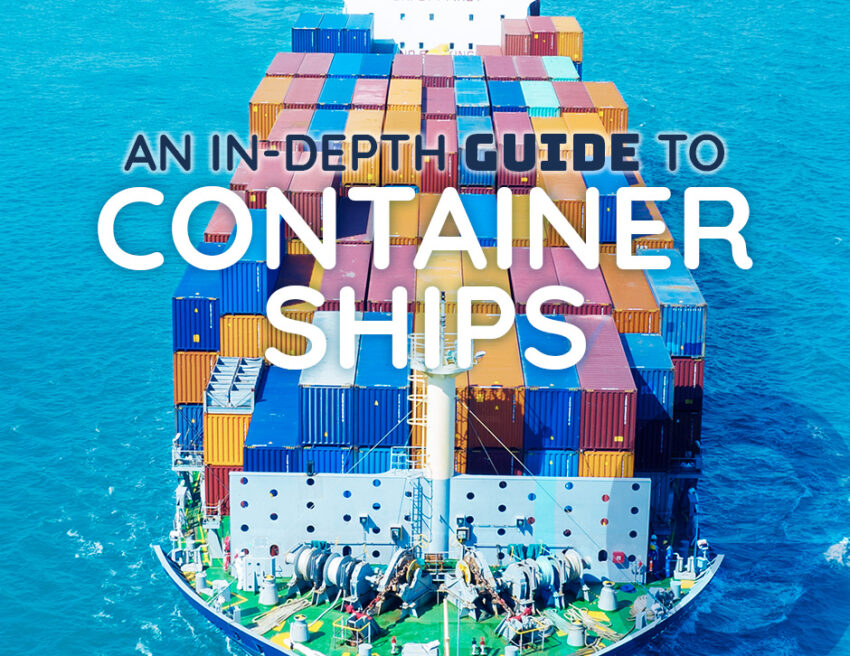Today, nearly every product we use has crossed oceans in a container ship, from the clothes we wear to the electronics in our homes. These ships are essential to global trade, transporting a wide array of goods, connecting nations, and driving the global economy. While they may appear as simple vessels, container ships are complex engineering feats that have reshaped the way we ship goods worldwide. In this guide, we’ll dive into the world of container shipping, exploring how they function, their historical significance, and the innovations shaping their future.

What Are Container Ships?
Container ships are specially designed vessels that transport large volumes of goods packed into standardized containers. These containers, usually 20 or 40 feet long, are made of steel and are easy to load, unload, and transfer between ships, trucks, and trains. This standardization allows for more efficient transport, reducing loading times and cutting overall transportation costs. Additionally, container ships vary in size, from smaller vessels serving regional trade routes to ultra-large ships capable of carrying over 20,000 containers on global routes. As an integral part of the shipping industry, container ships streamline the global supply chain, making goods transport faster, more reliable, and cost-efficient.
The Evolution of Container Shipping
The idea of containerized shipping emerged in the 1950s, thanks to American entrepreneur Malcolm McLean. Before containerization, cargo loading and unloading were slow, labor-intensive processes. McLean’s revolutionary concept was to design a system where entire truck trailers could be lifted onto ships, reducing manual labor and speeding up the shipping process.
In 1956, McLean’s Ideal X became the first containerized ship, carrying 58 containers between Newark and Houston. This launch sparked a global shift. The development of container terminals, cranes, and the adoption of standardized containers allowed shipping companies to improve efficiency. Over time, container ships grew in size, with modern vessels now capable of transporting over 20,000 TEUs (twenty-foot equivalent units).
How Container Ships Operate
Operating a container ship is a complex process, involving various steps from loading and unloading to navigating the vast oceans. Let’s look at the key components of a container ship’s operation.
Loading and Unloading
At ports, large cranes are used to load and unload containers onto ships. The loading process follows a well-planned sequence, placing the heaviest containers at the bottom to ensure stability. Moreover, modern container terminals rely on automated systems that help move containers more efficiently, reducing loading times and increasing throughput.
While loading and unloading is generally fast, it can vary depending on factors like the type of goods being transported, port conditions, and labor availability. For instance, perishable goods require quicker unloading to maintain their quality. Port congestion, bad weather, and labor shortages can also affect the process.
Navigating the Oceans
Container ships are engineered to endure harsh ocean conditions and cover long distances at high speeds. A skilled crew, including the captain, officers, and engineers, oversees navigation. Furthermore, modern vessels are equipped with cutting-edge technology such as radar, GPS, and advanced navigation systems, which help guide the ship safely and efficiently across its route. The journey is carefully planned, with routes adjusted to optimize speed, fuel consumption, and safety. Container ships often follow established shipping lanes, avoiding obstacles and minimizing risks. Lastly, while piracy remains a concern in some regions, security measures are always in place to safeguard the ship and its crew.
Maintaining Speed and Efficiency
Container ships typically travel at speeds between 15 to 25 knots (17 to 29 miles per hour). Though not as fast as other modes of transport, ships are designed for long-haul efficiency rather than speed. Fuel consumption and carrying capacity play crucial roles in operational efficiency. It needs to be mentioned that, while advancements in fuel technology and ship design have made container ships more fuel-efficient, helping reduce environmental impacts. Moreover, many modern vessels now use low-sulfur fuels, and there’s a growing push to explore alternative propulsion methods such as LNG (liquefied natural gas) and hybrid-electric engines to further cut emissions.
Types of Container Ships
Container ships vary in size and design, with each type serving specific needs and trade routes. The size of a container ship is typically measured in TEUs (twenty-foot equivalent units), which indicates how many standard containers a ship can carry.
Feeder Ships
Feeder ships are smaller vessels that transport containers between regional ports, linking smaller harbors to major global hubs. These ships are vital for connecting less busy ports to major shipping routes.
Panamax Ships
Panamax ships are designed to fit within the dimensions of the Panama Canal, one of the world’s most crucial shipping routes. These vessels can carry between 4,000 and 5,000 TEUs and typically serve transcontinental routes between the Americas, Europe, and Asia.
Post-Panamax Ships
Post-Panamax ships exceed the size limits of the Panama Canal and can carry between 5,000 and 10,000 TEUs. These larger vessels are mainly used on long-haul international routes and do not typically pass through the Panama Canal, unless the canal is expanded to accommodate them.
Ultra-Large Container Vessels (ULCVs)
ULCVs are the largest container ships in the world, capable of carrying over 20,000 TEUs. They primarily serve high-volume trade routes such as those between Asia and Europe or across the Pacific. These giants require specialized infrastructure and advanced systems to manage their enormous size and cargo load.
Environmental Impact of Container Ships
While container ships are essential to global trade, they contribute significantly to environmental challenges. Shipping accounts for about 3% of global CO2 emissions, and container ships make up a large portion of that. The use of high-sulfur fuel in many vessels produces harmful pollutants that affect both the air and water.
In response, the shipping industry is taking steps to improve sustainability. The International Maritime Organization (IMO) has set ambitious targets to reduce carbon emissions from shipping, pushing for improvements in fuel efficiency and a shift to cleaner fuels. Many companies are also investigating alternative propulsion systems, including wind-assisted propulsion and hydrogen fuel cells, to further reduce environmental impact.
The Future of Container Shipping
As global trade grows and environmental pressures mount, the container shipping industry is undergoing significant changes. The rise of smart shipping technologies, powered by data analytics and the Internet of Things (IoT), is set to revolutionize operations. These advancements promise to optimize routes, minimize fuel consumption, and anticipate maintenance needs, improving overall efficiency.
Furthermore, the industry continues to push for the development of even larger container ships, which could drive down transportation costs by maximizing cargo capacity. However, this trend raises concerns about port capacity and infrastructure, as many existing ports struggle to accommodate these massive vessels.
Conclusion
Container shipping industry is the lifeblood of global trade, enabling efficient and cost-effective movement of goods across oceans. From their origins in the 1950s to today’s high-tech, mega-vessels, these ships have continually evolved to meet the needs of an increasingly interconnected world. While the industry faces environmental challenges, it remains central to the global economy, with innovations on the horizon aimed at making container shipping even more efficient and sustainable. Understanding the operations of container ships and their role in global trade offers valuable insight into the systems that keep our world moving.


